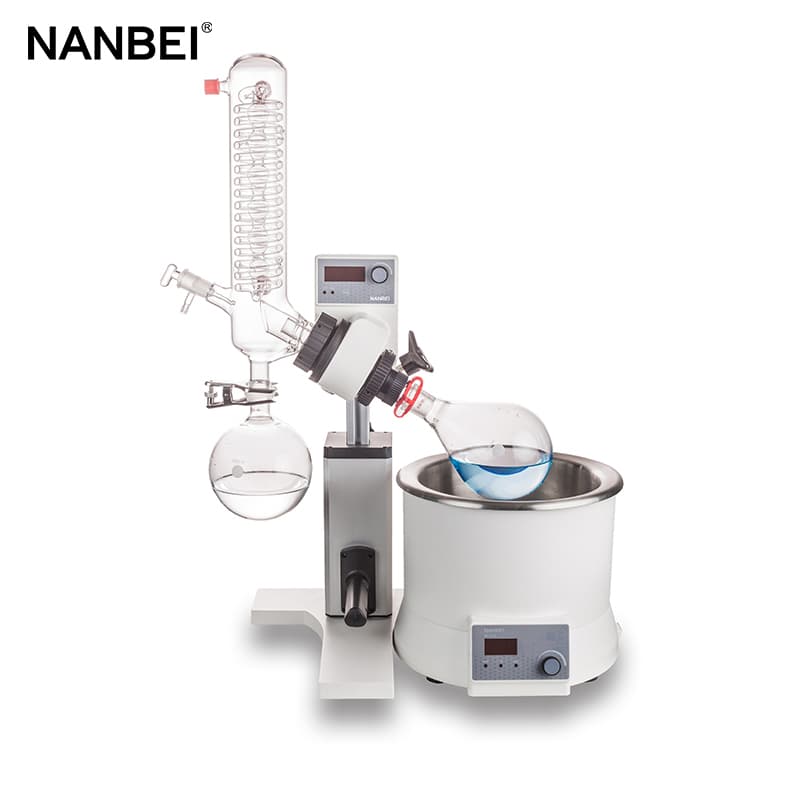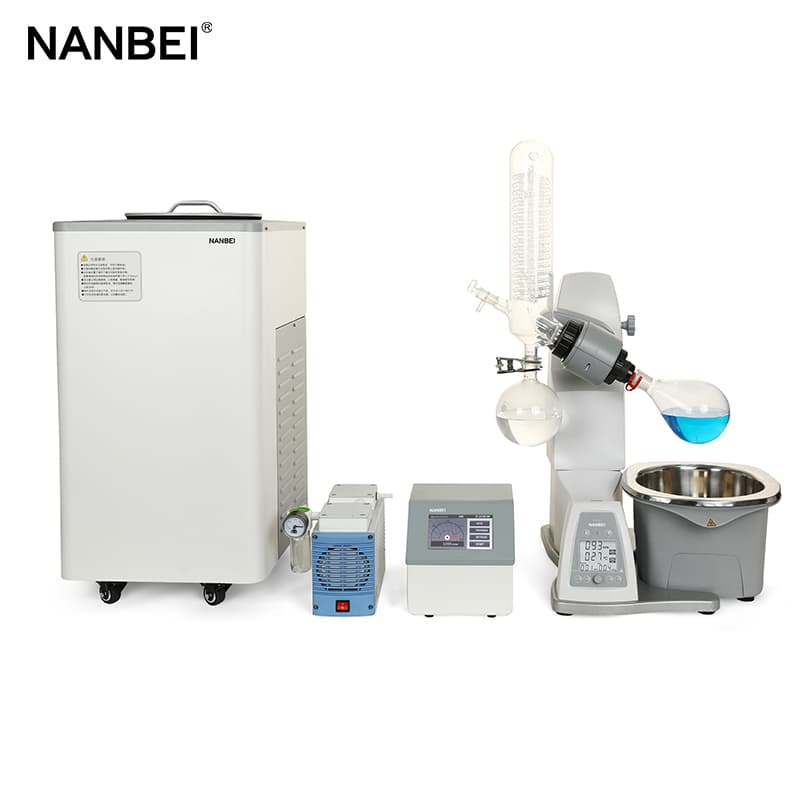 Mobile: +86 15890068607
Mobile: +86 15890068607
 Email: nanbeiinstrument@nanbei-china.com
Email: nanbeiinstrument@nanbei-china.com
 Mobile: +86 15890068607
Mobile: +86 15890068607
 Email: nanbeiinstrument@nanbei-china.com
Email: nanbeiinstrument@nanbei-china.com
The rotary evaporator is a commonly used equipment in the laboratory, mainly for the pretreatment process of samples in fields of food and environment etc. Its main role is to concentrate and switch solvents. The rotary evaporator has the characteristics of fast evaporation speed, controllable temperature and vacuum degree, convenient use, low noise and wide variety.

The main components of rotary vacuum evaporator:
1. Rotary motor, it can drive the evaporating flask through rotation.
2. Evaporation pipeline, it is the support shaft for the rotation of the evaporating flask, and the vacuum-sealed pipeline for extracting steam from the material.
3. Vacuum system, it reduces the pressure in the evaporator system and lowers the boiling point of the material.
4. Heating bath, it usually uses water or oil to heat the material.
5. Condenser, in order to speed up the condensation efficiency, it is usually made into a double snake surround type, and then add a condensing agent such as dry ice in it to condense the sample.
6. Condensed water collection bottle at the bottom of the condenser, it is used to capture the distilled solvent after recondensation and collect samples.
7. Lifting device, it is a mechanical or motorized mechanism that can quickly lift the evaporating flask from the heating bath.

In addition to the evaporator, the complete rotary evaporator system is generally equipped with a low-temperature coolant circulating pump and a circulating water vacuum pump. The function of the low-temperature coolant circulating pump is to continuously circulate the low-temperature liquid to the condensing pipe to keep the condensing pipe at a low temperature, while the circulating water vacuum pump is used to draw out the air in the evaporation flask so that it is in a negative pressure state.
* HOT ARTICLE
Welcome to the official website of the Nanbei Group *